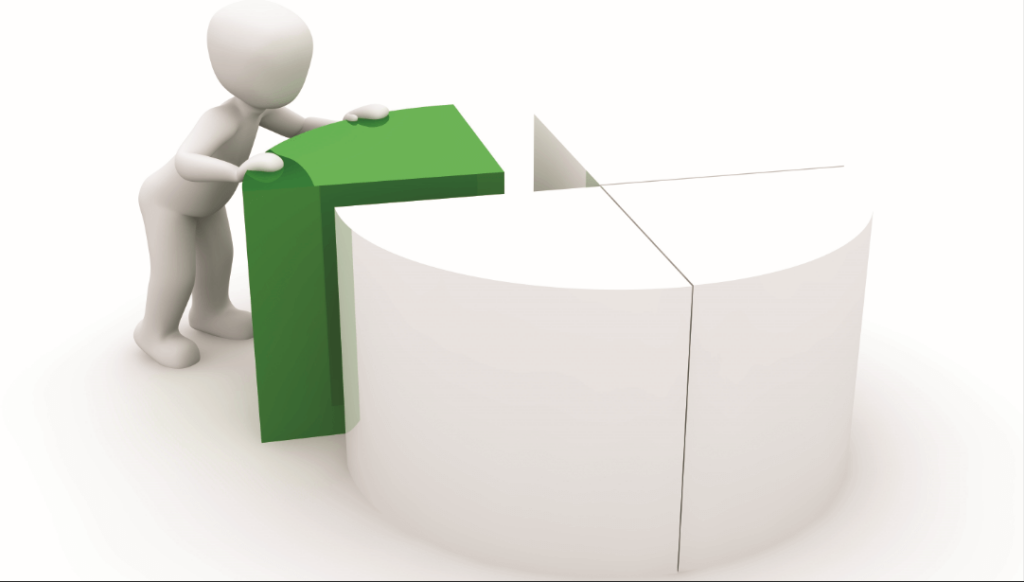The Initial Facts
Joe and Joanne are both 55-year-old investors. They hope to retire in 10 years and each have $100,000 invested in the stock market.
Joanne invested in a portfolio focused on the highest dividend payers in the United States and Joe put his money in a portfolio that tracks the S&P 500 Index, which consists of both dividend and non-dividend paying stocks.
We used historical data to show how this would have worked over a live market, but remember past performance is no guarantee of future results.
The Accumulation Phase
For the first 10 years, both investors did not take any income, but instead re-invested their dividends. Let’s call this the accumulation period.
Joanne’s portfolio value after 10 years was $386,848 and Joe’s portfolio value after 10 years was $385,118.
The Distribution Phase
For the next 20 years, each withdrew 5 percent income from their respective portfolios.
Joanne was able to take $718,757 after 20 years and Joe was able to take $569,079 after 20 years.
Joanne’s additional income is over $149,000 more than Joe’s income.
Ending Value
Joanne had an ending value of $906,634 and Joe had an ending value of $691,313. This represents a difference of over $215,000 which represents additional residual portfolio value. Joanne essentially got a total of $364,000 more in additional income and growth from the same initial investment.
Drove the Income and Why the Big Difference?
Joe’s withdrawals were made up of about 65 percent principal and 35 percent dividend payments, while Joanne’s withdrawals were made up of nearly 21 percent principal and 79 percent dividends! This was the key to her end balance and sustainability of her portfolio.
Joanne’s portfolio is comprised of the top 30 percent of the highest dividend yielding stocks in U.S. listed markets. Joe’s portfolio tracks the S&P 500 Index.
Discovering the Power of Dividends
Generating income is a universal challenge that impacts most investors. With bond yields at a low point, dividend paying equities can become an income engine for your portfolio.
Since 1926, reinvestment of dividends has been responsible for more than 96 percent of the stock market’s return, helping a $10,000 investment grow to about $47.6 million more than $46 million over the stock returns alone.
The S&P 500 Index and data compiled by Jeremy Siegel, a professor of finance at the Wharton School of the University of Pennsylvania. The S&P 500 Index is an unmanaged index of 500 U.S. large-cap common stocks traded on the New York Stock Exchange and NASDAQ Stock Market, weighted by market capitalization. It was launched March 4, 1957. Professor Siegel has reconstructed S&P 500 Index returns for earlier years using methods explained in his book, “The Future for Investors.” Unlike a mutual fund, the performance of an index is not reduced by operating expenses, transaction costs and taxes. It is not possible to directly invest in an index. Index performance is for illustrative purposes only and is not intended to represent the past or future returns for any actual investment. Past performance does not guarantee future results.
Summary
I hope we have demonstrated the real value of dividend investing! Dividend investing is quite effective and should be worthy of consideration.
Sources: Bloomberg, Kenneth French Data Library. Period from 12/31/1985 to 12/31/2015, with accumulation phase from 12/31/1985 to 12/31/1995. Withdrawal phase from 12/31/1995 to 12/31/2015. Hypothetical example for illustrative purposes only. Does not represent an actual investment.
Past performance is no guarantee of future results. It is inherently difficult to make accurate dividend growth forecasts, and the outcomes from those forecasts are not guaranteed. Investment decisions should be based on an individual’s own goals, time horizon, and tolerance for risk. Diversification does not ensure a profit or guarantee against loss. Stock markets can be volatile and can decline significantly in response to adverse issuer, political, regulatory, market, or economic developments. Investing in equities involves risk, including the risk of loss of principal. Craig Richman









